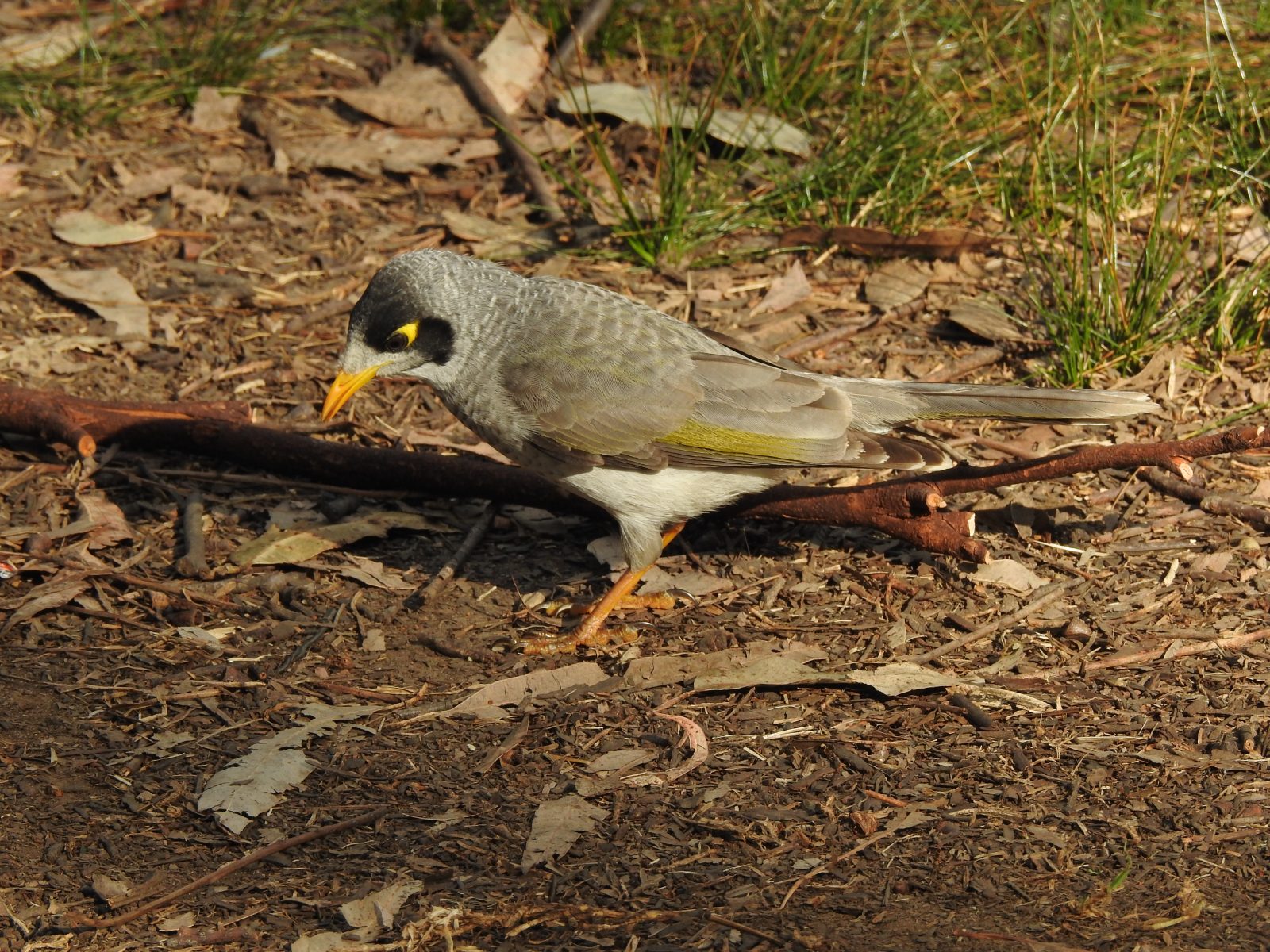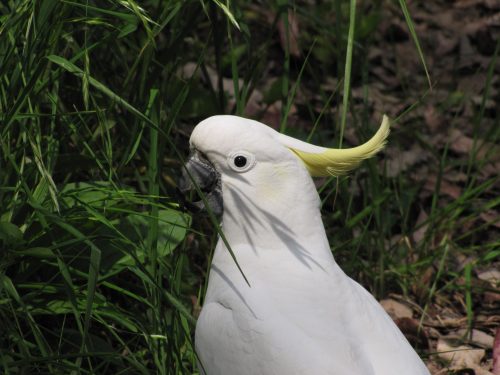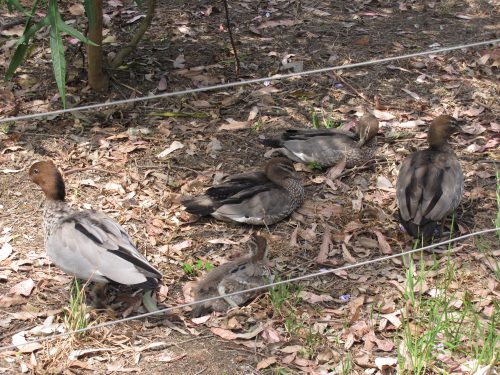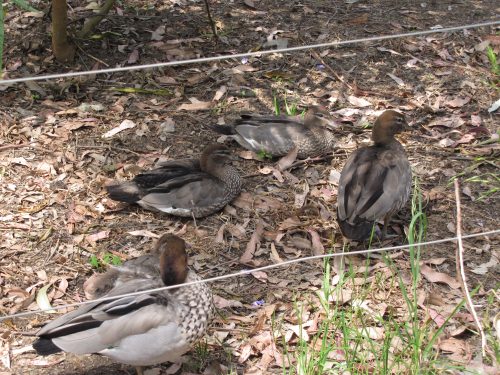Sulphur-crested Cockatoos in Lane Cove
One of Australia’s most recognised and common birds would have to be the Sulphur-crested Cockatoo. I have included a series of photos of this species in this post today. It is found along the north, east and southern coasts of Australia, and in Tasmania. It has been introduced to the south of Western Australia, and in New Zealand.
Large flocks
Throughout its range, it can often be found in large flocks numbering from a few dozen through to many hundreds. In my travels around different parts of Australia, I have observed this species in large numbers, especially where there is an abundance of seed for them to feed on, such as pastures. I have seen large flocks settle in paddocks, making the ground look like snow has fallen. When a flock is feeding on the ground, one or more birds will perch in a tree or on a fence post watching out for any danger. A large flock can also add colour to a dull grey looking gum tree when they all perch together.
Noisy birds
These birds have a very raucous call, and when a flock flies low overhead while calling, it is very hard to carry on a conversation. In some caravan parks we have stayed in where this bird is resident, a noisy flock can be an unwelcome alarm clock, particularly at first light when one wants to sleep in a little. In populated areas, this beautiful bird is often regarded as an unwelcome pest. With such an abundance of food, cockatoos can easily get bored and start chewing on timber work around houses and other buildings. Some of my readers have complained in the past about the destructive nature of this species. There is no easy solution to this problem because this species is a protected bird, like all of our native birds. If you are having a problem with cockatoos, please be in contact with your local National Parks and Wildlife office. It is an offence to destroy them.
Good pets
This species is also a common, long-lived pet for many people. They can be delightful pets and will often learn a range of words and phrases to mimic their owners. I am not familiar with the current regulations on keeping our native birds as pets, so it is best to talk to your local pet shop owners before buying a cockatoo as a pet. They are probably commonly available in pet shops in countries other than Australia. There should be no restrictions on keeping them outside of Australia.
The photos in today’s post were all taken of an individual in the Lane Cove National Park in Sydney. we were staying with our son spending time with our grandchildren during school holidays. On this occasion, we had a few hours break from the children, so we packed a picnic lunch and drove the short distance to the national park. Along the Lane Cove River, there are many lovely grassed picnic areas, complete with picnic tables and gas barbeques for the public to use.
Corellas v Cockatoos
Some people can easily be confused when trying to identify cockatoos and corellas. The three species of corellas in Australia are the Little Corella, Long-billed Corella and the Western Corella. Their ranges often overlap. I have even seen mixed flocks consisting of two species. Corellas are generally a little smaller and all corellas lack the yellow crest of the Sulphur-crested Cockatoos. The calls are also different, with the corellas’ calls being not as loud or as harsh.
Further reading:
- Sulphur-crested Cockatoos up close
- Red-tailed Black-cockatoos
- Gang-gang Cockatoos
- Great Birding Moments #13
- Trevor’s Photos – buy some of my photos on a variety of products such as mugs, place mats, t-shirts and many more.
- Little Corellas at Mannum
- Long-billed Corellas
Ducks in Lane Cove National Park
On our most recent trip to Sydney in October, we were primarily there to look after our two grandchildren (ages 8 and 5) during the school holidays. This is a very pleasant duty we enjoy several times a year. They are, however, very energetic children and so there comes a time during our stay when we look for opportunities to have some down time.
Thankfully, my son’s home is only a short drive to some very pleasant parks, including Lane Cove National Park, a mere ten-minute drive away – subject to traffic conditions, of course. On several occasions, we had a few hours to ourselves, so we packed the folding chairs, a picnic lunch, a thermos for a cuppa and some biscuits. I always remembered to take my binoculars and camera with as well.
At one point I noticed a small family of Australian Wood Ducks grazing on the grass near where we had our chairs located. I grabbed my camera and managed a few nice shots of them. At one point, the male of the group stood guard on one of the picnic tables (see photo at top). He was obviously keeping watch over his little family of three young ones.
Although the male was on guard, he didn’t seem all that perturbed that I had approached to within a few metres to take my photos. This national park is very popular, and there are hundreds of visitors daily and probably thousands every weekend, seeing it is so close to the well-populated Chatswood CBD. I have found other species equally unafraid of humans, including some Laughing Kookaburras who snatched some of my wife’s lunch the same day I took the photos on this post. (In a few days I will post an article, with photos of this incident.)
I should add here that this is the Australian Wood Duck, not to be confused with the Wood Duck, a north American species, and quite unrelated as far as I know.
The Australian Wood Duck is a common species found throughout much of Australia, except for the driest parts of the inland. It is usually found near waterways, lakes, swamps and dams, and in parks and ovals, but it also can be see grazing on grasses and pastures quite some distance from water.
Newsletter: just a reminder that I will be starting a monthly newsletter in the New Year. You can subscribe below the comments section at the bottom of each article.
Further reading:
Lunch snatching birds at Lane Cove National Park
As I write this we are in Sydney visiting our son and his family. We enjoy visiting him because it is a precious time of blessing as we spend time with our two grandchildren, ages eight and five. It is always great to see them growing and developing. During our times here in Sydney we have limited opportunities to go birding, so any free time we have is really appreciated. On this particular trip, we have visited Lane Cove National Park on several occasions, both times for lunch. This national park is only about ten minutes away by car, depending on the volume of traffic and time of day.
On a recent visit, we set up our folding chairs in a shady spot with a good view of the river. We placed our picnic lunch on the side table of our chairs. Before we could take a bite I observed two Long-necked Turtles sunning themselves on a log protruding from the water (see photo above). I handed my binoculars to my wife so that she could have a closer look at them.
That was when we were robbed!
A cheeky Laughing Kookaburra swooped down from a nearby branch. It snatched a part of my wife’s sandwich and flew off with it. As it dropped the sandwich makings on the grass nearby, another kookaburra flew down to share in this ill-gotten booty. Not long after this, as they were squabbling over their prize, a Noisy Miner joined in the fun. Noisy Miners are one of our native honeyeater species; they can be quite aggressive towards smaller birds and they are obviously quite at home matching it with the much larger kookaburras.
My wife was incensed. She had lost a portion of her lunch to a thieving bird. Later, she read a small plaque on one of the park picnic tables. In fact, all tables have copies of the same message: “Visitors are asked not to feed the birds and animals” or words to that effect. Perhaps the rangers should also put up signs instructing the local wildlife not to snatch human food.
Naturally, we guarded the rest of our lunch very carefully. No sense in losing any more of it. A few minutes later, two Brush-turkeys came mooching around. They looked as if they also wanted a handout. In fact, I held out my empty palm towards one of them and it approached to within a few centimetres of my hand. It left disappointed.
Please do not feed the birds
I think it would be prudent of me to make mention of the fact that it is strongly recommended that people in parks, gardens and even their own gardens refrain from feeding our native birds. Most human food – especially bread – is actually quite dangerous – even deadly – for our birds. By all means, provide fresh drinking water in a birdbath, but resist the desire to feed them. It’s for their welfare.
Good birding,
Trevor
PS Go to below the comments section to subscribe to my monthly newsletter. These newsletters will contain extra news items and special insights and photos not available in my regular posts.
Ducks in the Lane Cove National Park
The Lane Cove National Park in Sydney has the Lane Cove River flowing through it. Many areas near the banks of the river have been cleared of vegetation to accommodate ovals, picnic grounds and parking space for the many visitors who frequent the park daily. The water and the picnic areas naturally attract a range of ducks.
On our visit a few months ago I only recorded two species: Australian Wood Ducks and Pacific Black Ducks. The photo above shows the male on the left and the female on the right. The photo shows – in part – the big differences in the plumage between the male and female. The photo below shows some of the fine markings on the male bird.
Today’s last photo is of a Pacific Black Duck, one of our most common ducks.
Annoying Noisy Miners

In my last post, I showed photos of some Laughing Kookaburras in the Lane Cove National Park in Sydney. This park is only a short distance from my son’s home, so over the years, I have visited it often. On this occasion, the kookaburras allowed me to come very close to where they were investigating something on the ground. I couldn’t determine what they were so interested in because I was enjoying photographing the birds from a close distance.
A Noisy Miner also joined in the quest for something to eat. They may have spotted some picnic leftovers and were looking for more. Just like the kookaburras, I was able to get close up photos of the miners in their natural environment without disturbing them in any way.
On other visits to this park, the Noisy Miners can be rather annoying. Just like the kookaburras, they are very bold and will come up to humans and even snatch food from the picnic tables when it is left uncovered or unattended. There are plenty of signs in this park warning people not to feed the birds, but that still doesn’t stop the birds snatching human food for themselves.
The Noisy Miner is one of many species of native Australian honeyeaters. It is not to be confused with the very similar Yellow-throated Miner. Their distribution overlaps in parts of Australia. There is yet another species – the Black-eared Miner but that species is endangered and is only found in a few small isolated populations.
The Noisy Miner is an aggressive species and has adapted well to urban environments and introduced plant species. It acts aggressively towards many of our smaller bird species such as finches and wrens, chasing them away from parks and gardens, taking their food and nesting spots. Some people also find that their raucous calling can be annoying at times.
















